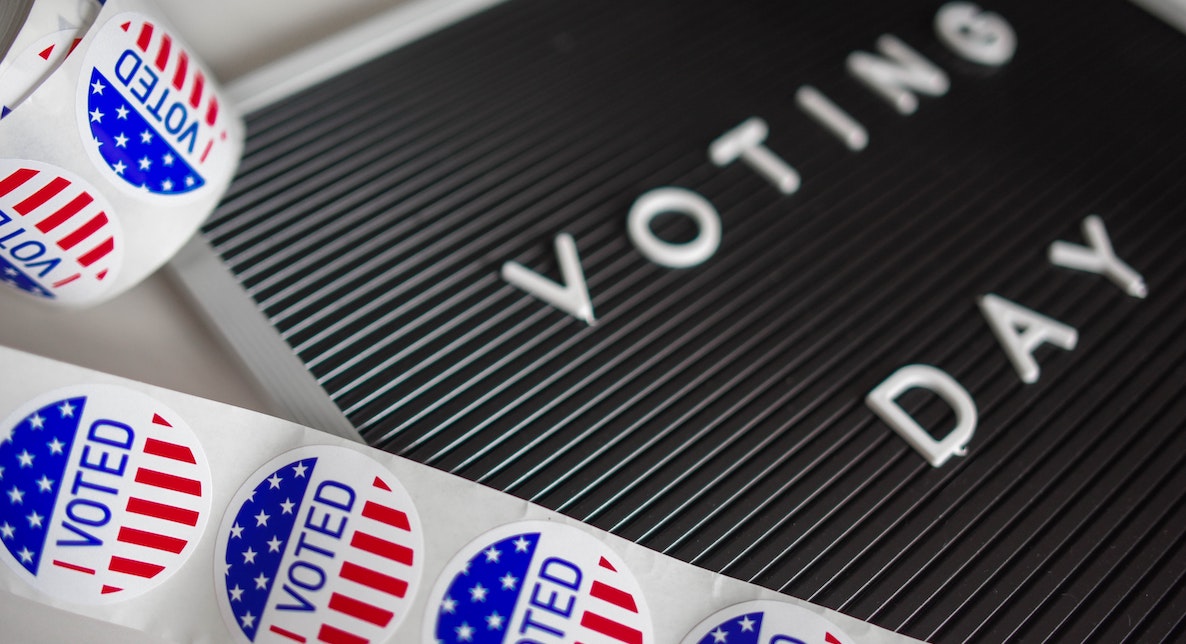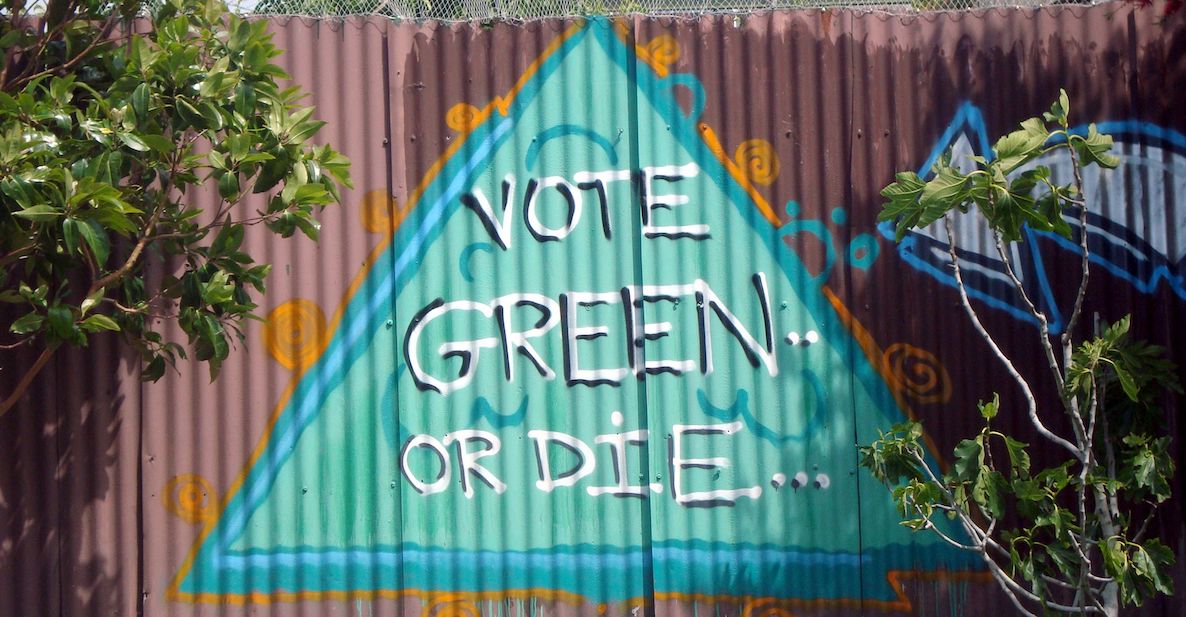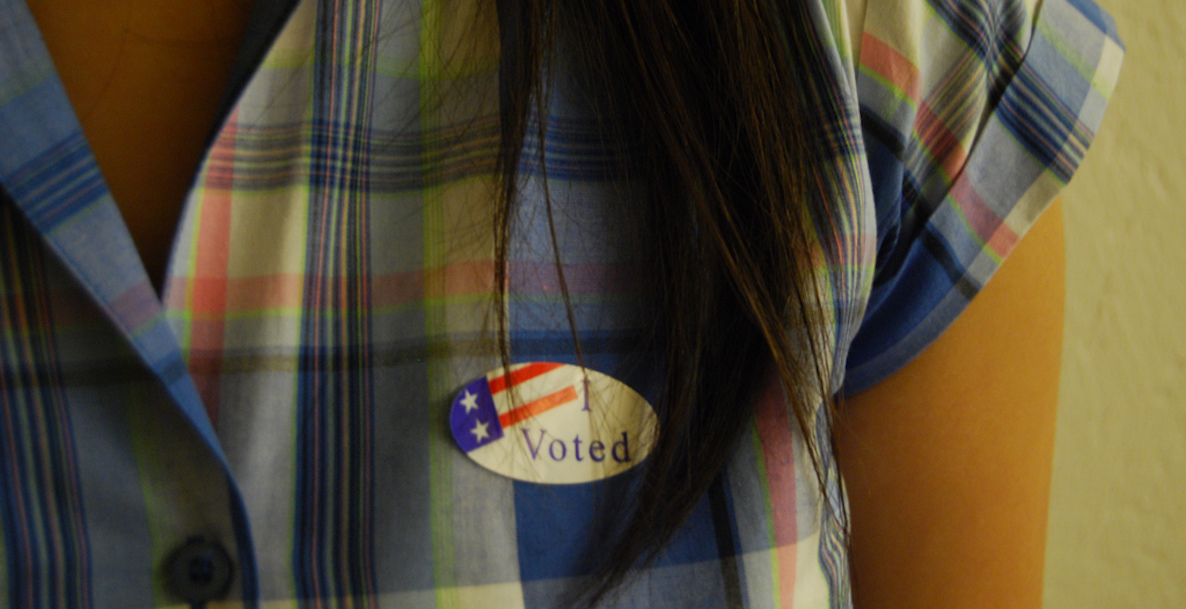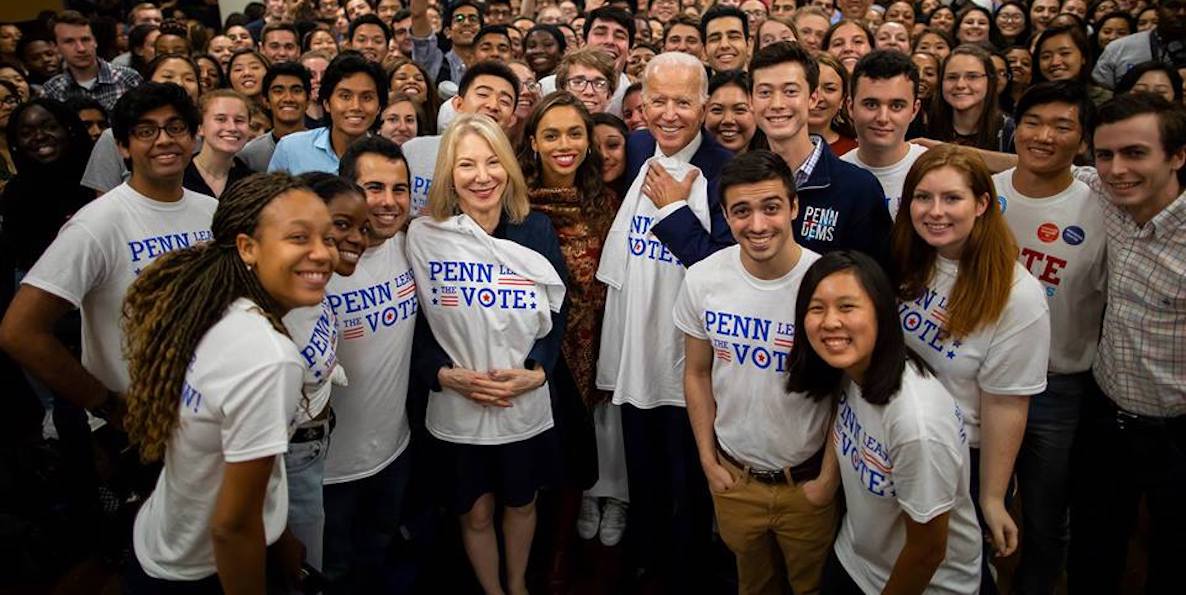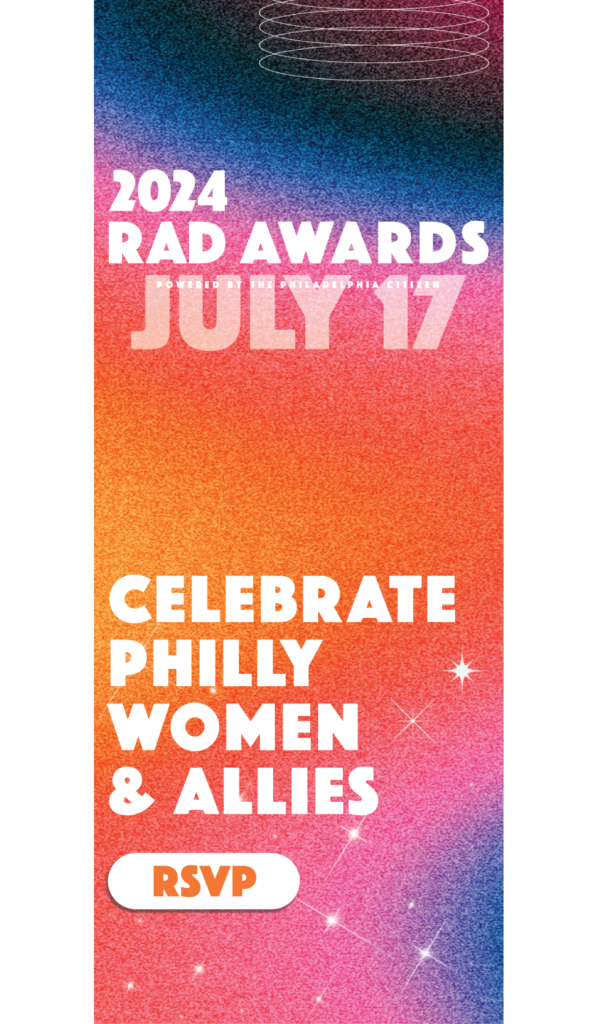To Penn freshman Jay Falk, who already has more experience with getting out the vote than many campaign workers, there are two types of vote-averse young people: Those who think voting is pointless, full stop. And those—the vast majority—who think voting is too hard, or too inconvenient, or that they don’t know enough to cast a ballot.

Prefer the audio version of this story? Listen to this article on CitizenCast below:

It’s this group Falk knows she can win over. Falk has been working to get her peers to vote since she was a sophomore in Alexandria, Virginia, at a 4,000-person high school outside D.C. As a volunteer with Inspire U.S., she helped to register 900 of her fellow students over the course of three years, most before she was even old enough to vote. Then she came to Penn—just in time for the 2018 midterms.
With the student group Penn Leads the Vote, Falk spent the fall talking to any and every one she could about registering to vote, and then actually getting to the polls. The group, along with Penn Dems and College Republicans, set up tables in the center of campus, and knocked on dorm room doors. They organized a campus party to celebrate voters on Election Day. They answered the most basic questions like, “Where do I vote?” (Often just across the street.)
What Falk found is what was evident in races around the country: That young people are engaged, and are more inclined to vote than in at least a generation. They just sometimes need a nudge. “Most students want to make an impact,” Falk says. “Talking to them about voting made a huge difference. That, and social pressure that this is the right thing to do.”
“The best part is when I hear people say to me, ‘In past years, I didn’t see the value, now I do, and I understand why being engaged in voting and civics is going to make a better community,’” she says. “That happens a lot. It’s why I do it. I find it inspiring every time.”
Thanks in part to Falk and her fellow student volunteers, turnout on Penn’s campus was up 350 percent in 2018 compared to the 2014 midterms. That contributed to the 139 percent upsurge in voting overall last November in University City’s 27th Ward. Four years ago, just 12 percent of eligible young voters in the ward went to the polls; in 2018, 34 percent cast a ballot, a 249 percent increase, according to Commissioner Al Schmidt’s office. The 27th Ward, which overall had the highest voter turnout jump in the city, had more voters across all demographics, but none came even close to the showing of young people.
Nationally, there was a 10 percent increase in turnout among young voters, from 21 percent in 2014 to 31 percent last November; in Pennsylvania, turnout was 30 percent. That is still, to be clear, astoundingly, democracy-killingly low. But even that kind of showing across the city could have a significant impact. According to census data, there are approximately 200,000 Philadelphians between the ages of 18 and 25; if 31 percent of them turn out for the May 21 primary, that would amount to about 61,000 votes. That is more than enough to swing an election, as we learned in 2016, when Hillary Clinton lost Pennsylvania to Donald Trump by 44,000 votes.
![]()
More than that, it would be enough to make our elected officials listen to the issues that matter to young people—schools, gun safety, the environment, college access, jobs. And it would bode well for our democratic future: Voting is a habit, and studies show that the earlier a person starts to vote, the more inclined they will be to vote in future elections. Luckily, November’s turnout may not be an anomaly; it is, after all, the second time youth voting exceeded expectations.
“In some ways the worst fears of the 1990s—that every new cohort will vote in decreasing numbers than the previous one—has reversed itself,” says Donald Green, Columbia University political scientist and co-author of Get Out the Vote: How to Increase Voter Turnout. “That may be because we are more polarized, which raises the stakes for politics and makes it more interesting for new voters.”
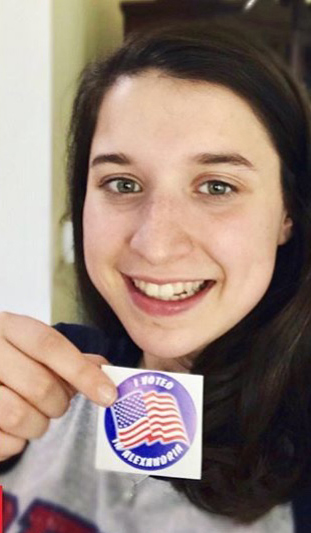
Does that mean we need the bitter partisanship of our national politics to get people to the polls? Maybe. But also galvanizing was what Falk calls her generation’s Vietnam: The school shooting in Parkland last year that spawned a youth-led anti-violence movement across the country. A survey from the Center for Information & Research on Civic Learning and Engagement (CIRCLE) at Tufts University found that young people who at least agreed with the post-Parkland movement were 21 percent more likely to say they’d voted in the midterms; 43 percent of 18 to 24 year olds said the shooting “somewhat” influenced their vote, and 20 percent said it affected them a lot.
“It’s an issue that is getting young people involved in the political process, that has people talking about student activism in a really big way, and that got students to realize that their vote matters,” Falk says. “It was really the first time that’s happened in a long time.”
Jennifer McAndrews, CIRCLE’s director of communications, strategy and planning, says the Parkland movement influenced the election in several ways that are instructive for getting out the vote in future elections as well. By last June, new voter registration across the states was already at the level of the 2016 election, something unheard of for an off year. McAndrews traces this to the spring protests led by Parkland survivors, who roundly called on their peers to engage in the most traditional forms of activism that exist in a democracy: calling elected officials, showing up at meetings, registering to vote—and then voting.
Turnout on Penn’s campus was up 350 percent in 2018 compared to the 2014 midterms. That contributed to the 139 percent upsurge in voting overall last November in University City’s 27th Ward.
That, in turn, led to an increase in the numbers of young people contacted by campaigns and other get out the vote organizations. “The earlier you register, the more outreach you get, and the most important thing in getting people to vote is contact,” McAndrews says, noting that this is an argument in favor of automatic voter registration, and pre-registration of 17-year-olds, as some states have. “That’s for all voters. Young people are not particularly different than older voters in that way. But campaigns don’t reach out to them nearly as much.”
In his research on GOTV efforts over the last several election seasons, Green has come to the same conclusion, that personal outreach is the best way to get people voting. In fact, door to door canvassing—like students did at Penn—is one of the few consistent strategies proven to increase turnout. But among young people, of course, personal outreach also extends to the digital realm; some 14 million 18 to 24 year olds heard about the most recent election though Facebook, Instagram, Twitter or SnapChat, according to CIRCLE.
And since the 2016 election, several apps have made peer to peer vote nudging easier. Both VoteWithMe and VoterCircle, for example, let people find out who among their friends has voted in the past and how they’re registered, and gives them the ability to encourage them to cast a ballot this time around. A New York Times article last month cited research from OutVote that found a text from a friend made people around 10 percent more likely to vote. Even asking friends to “pledge” to vote has an effect: Mia Costa, a Dartmouth professor of government, conducted a study of five Philly-area colleges in the 2016 primary, and found that students who were asked to sign a pledge were 4.5 percent more likely to vote than those who were simply sent voting information.
![]()
There were other lessons gleaned from the 2018 election that Philly election watchers would do well to note: Universities that make a concerted effort to make voting a priority are ones where turnout grows. Penn and Drexel are both part of the national All In Campus Democracy Challenge, which ranks colleges on their plans and success at getting students to the polls. (Temple, weirdly, is not part of the contest.) Nationally, young Democrats outvoted Republicans by a margin of 67 percent to 32 percent; in some cases, their votes were enough to swing close races. And Democrats were also more civically engaged outside of the ballot box. In Philly, where Democrats already have an 8-1 registration advantage, that could make it even easier to get young voters to the polls.
On the other hand, the most difficult group to reach are young voters who are also low-income—a significant part of the population in Philly, where 25 percent of residents live in poverty. It’s one thing to get (often transient) college students voting; it’s another to reach young people whose lives are intimately entwined with the city. It’s those young people who need to be at the polls in May, when we’re deciding on our local leaders.
There are approximately 200,000 Philadelphians between the ages of 18 and 25; if 31 percent of them turn out for the primary, that would amount to about 61,000 votes. That is more than enough to swing an election, as we learned in 2016, when Hillary Clinton lost Pennsylvania to Donald Trump by 44,000 votes.
In part, the issues are structural: Without a captive audience, like a college or high school or office, it’s hard to reach young people, who often move. And technology is only as good as the network; if online peer pressure can encourage voting among a certain group of friends, it can also do the opposite when friends are not voting. It is, also, a sign of the way we conduct elections—on an inconvenient day, on off years, with little media coverage of the actual issues at stake. A CIRCLE report found that young voters are often the most unsure of where to vote, what’s on the ballot, what’s real and fake news, and often have trouble finding someone to cover their shift, so they can work. They also said voting itself was often a dismal experience, with poll workers who seemed to discourage their participation, didn’t look anything like them and didn’t seem willing to help. This was more true among communities of color, like those in many Philly neighborhoods.
![]()
In Philly, there is some effort to combat these issues: The Committee of Seventy’s Election Ambassadors program recruits student volunteers to be non-partisan poll-watchers on Election Day, something at least a few high school teachers have encouraged their students to do. The Commissioners Office is also launching an effort to bring in more, younger and more diverse, poll-watchers to voting centers around the city.
And, starting last year, several area schools have made a more concerted effort to register high school seniors, and get them to the polls—something that helped to bring 7,000 new voters out in November—before they leave and become harder to communicate with. ![]() This is work that several local organizations jumped in last year, including VoteThatJawn, a citywide effort led by Penn’s Lorene Cary; Asian-American organization SEAMAAC, which leads vote drives in schools; the Caucus of Working Educators; and Inspire U.S., which now has a local office.
This is work that several local organizations jumped in last year, including VoteThatJawn, a citywide effort led by Penn’s Lorene Cary; Asian-American organization SEAMAAC, which leads vote drives in schools; the Caucus of Working Educators; and Inspire U.S., which now has a local office.
It also takes young civically-minded citizens like Falk, who in addition to her GOTV work at Penn, has volunteered to lead Inspire’s registration drive at 3,100-person Northeast High School, an effort that started in earnest this week. Could that make 2019 a historic municipal race in Philly for youth turnout? It’s hard to say, but this is also a long game—beyond even 2020, to a lifetime of voting.
When she was in high school, Falk’s GOTV efforts included registering students, taking their names and numbers, and then calling them on the phone to ask them to pledge to vote, and to remind them on election day. As a “really big fan of local elections,” Falk this year is helping Penn Leads the Vote create the Franklin Cup, an incentive program to give out raffle tickets for AirPods and other things when students table, register, get friends to register, and host GOTV events.
Falk says her years of youth voter drives has convinced her—as it has McAndrews and others who work with young people—that her peers are ready to make their voices heard, both in protests and in the polls. That’s what makes her huge personal efforts worth it. “The best part is when I hear people say to me, ‘In past years, I didn’t see the value, now I do, and I understand why being engaged in voting and civics is going to make a better community,’” she says. “That happens a lot. It’s why I do it. I find it inspiring every time.”
This article is supported by the Solutions Journalism Network, a nonprofit dedicated to rigorous and compelling reporting about responses to social problems.
Photo via Penn Leads the Vote Facebook


